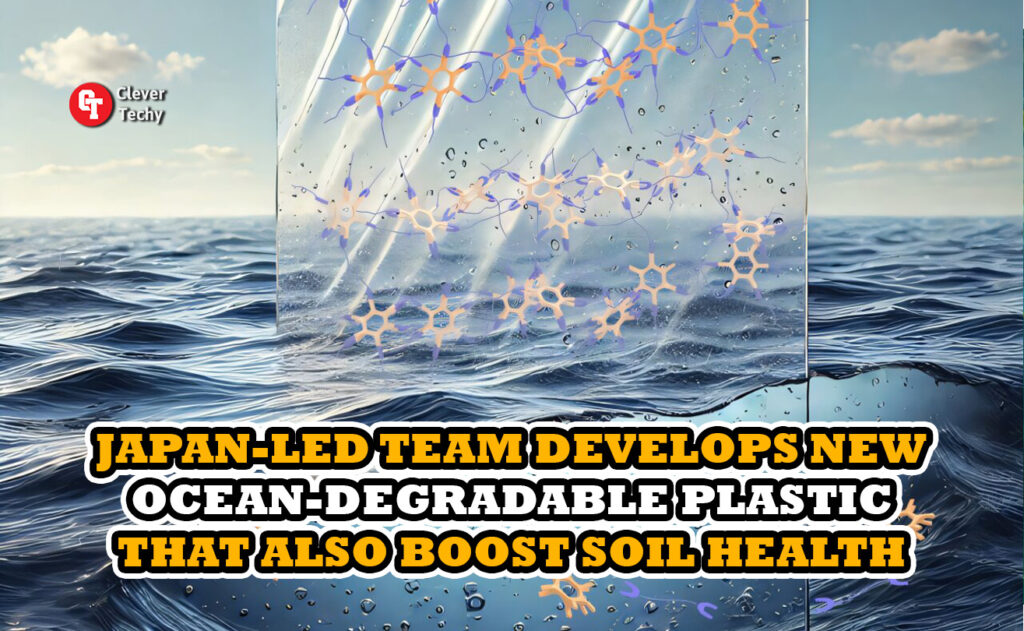The global plastic pollution crisis has spurred intense research into developing sustainable alternatives like Biodegradable Plastics. Recent advancements in materials science have brought us closer to a solution. A team of researchers led by Takuzo Aida at the RIKEN Center for Emergent Matter Science (CEMS) has developed a novel plastic that is both durable and biodegradable, addressing the pressing issue of microplastic pollution.
The Challenge of Microplastic Pollution
Traditional plastics, derived from fossil fuels, are notoriously persistent in the environment. These materials, once discarded, can break down into tiny microplastic particles. These microplastics can accumulate in oceans, soil, and even the human body, posing significant risks to ecosystems and human health.
A Sustainable Solution: Supramolecular Plastics
Aida’s team focused on developing supramolecular plastics, a class of materials held together by non-covalent bonds. These bonds can be reversibly broken, allowing the plastic to degrade under specific conditions.
The key to their innovation lies in the combination of two ionic monomers:
- Sodium hexametaphosphate: A common food additive.
- Guanidinium ion-based monomers: These provide the necessary strength and flexibility.
When these monomers are combined, they form cross-linked salt bridges, creating a strong and durable plastic. However, these bonds are susceptible to disruption in the presence of electrolytes, such as those found in seawater. This unique property enables the plastic to degrade in marine environments, mitigating the risk of microplastic pollution.
Key Advantages of the New Plastic:
- Durability: The plastic is as strong and heat-resistant as conventional plastics.
- Biodegradability: It can be broken down by bacteria, minimizing its environmental impact.
- Recyclability: The plastic can be easily recycled by dissolving it in salt water and recovering the original monomers.
- Versatility: It can be customized to create a variety of materials with different properties, from hard and rigid to soft and flexible.
- Eco-friendliness: It is non-toxic, non-flammable, and biodegradable, making it a sustainable alternative to traditional plastics.
Potential Applications
The potential applications of this groundbreaking plastic are vast and far-reaching. It can be used in various industries, including:
- Packaging: Creating sustainable packaging materials that can decompose in marine environments.
- Construction: Developing durable and eco-friendly building materials.
- Medical Devices: Producing biodegradable medical implants and devices.
- 3D Printing: Enabling the creation of complex and sustainable 3D-printed objects.
A Brighter Future
The development of this new biodegradable plastic represents a significant step forward in addressing the global plastic pollution crisis. By offering a sustainable and versatile alternative to traditional plastics, this innovation has the potential to revolutionize various industries and contribute to a healthier planet. As research continues to advance, we can anticipate even more exciting developments in the field of sustainable materials science.
Reference:
Bye-bye microplastics: new plastic is recyclable and fully ocean-degradable
Japan-led team develops new ocean-degradable plastic
Conclusion
The development of supramolecular plastic marks a significant step forward in the quest for sustainable materials. As we continue to grapple with the challenges of plastic pollution, such innovations offer hope for a cleaner and greener future.
Share this post on social media to spread awareness about sustainable solutions.
#USA #Eco-FriendlySolutions #science #technolony #DeGradablePlastic #RecyclablePlastic
you may also like these
Revolutionary Solar-Powered Water Generator: Transforming Deserts and Solving Water Scarcity
A Great Step, Clean Fusion Energy: CFS’s CSMC Milestone

